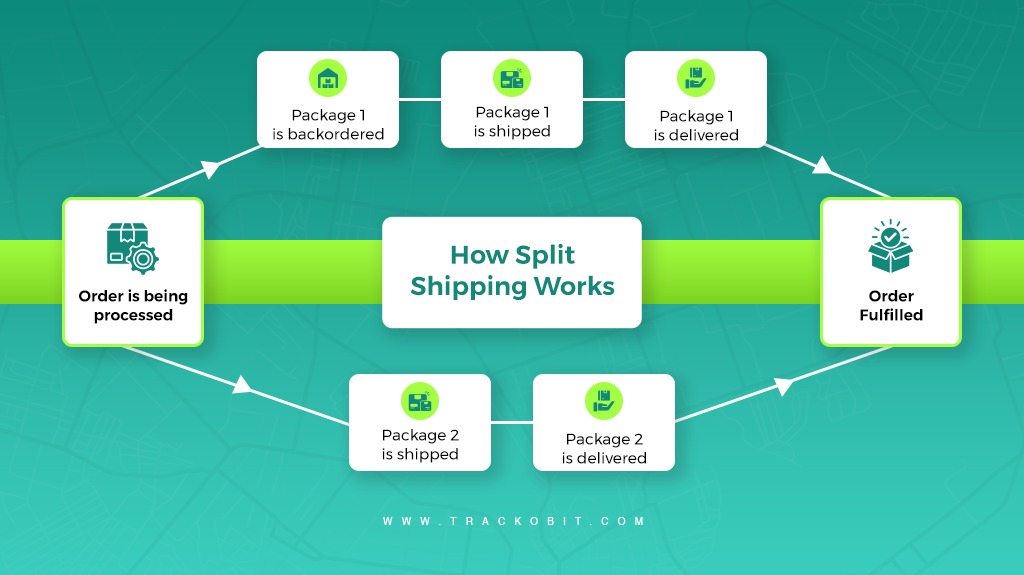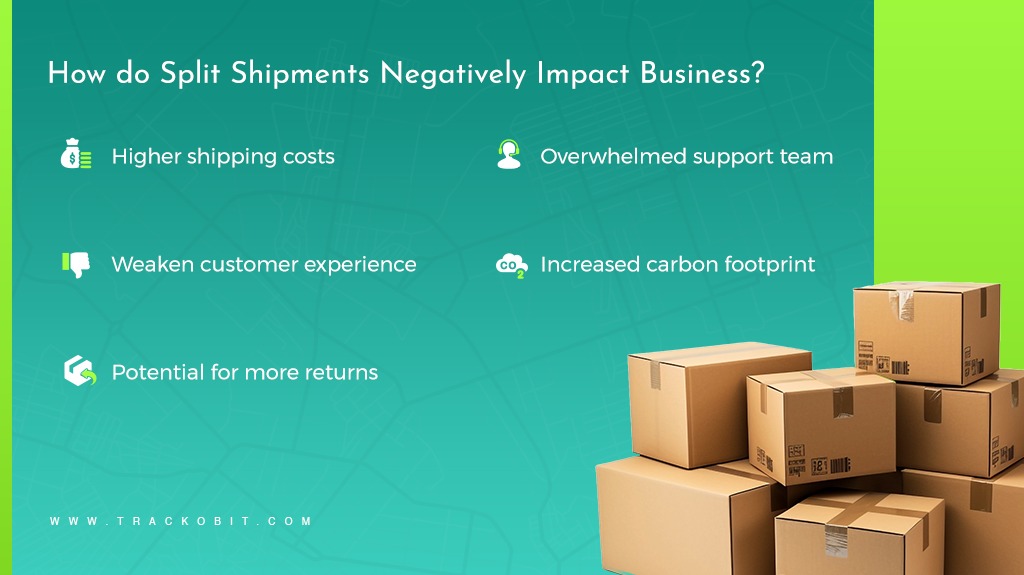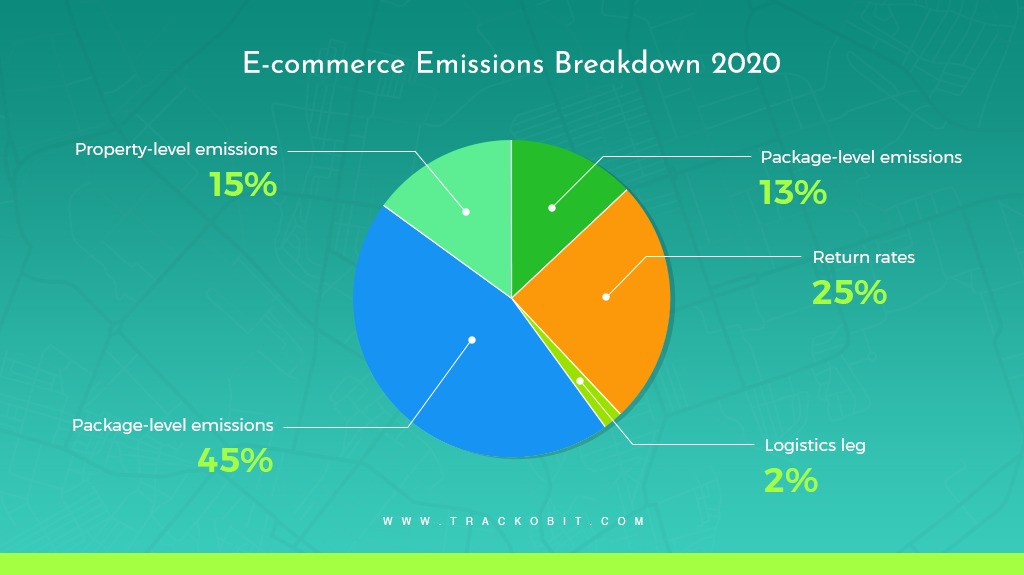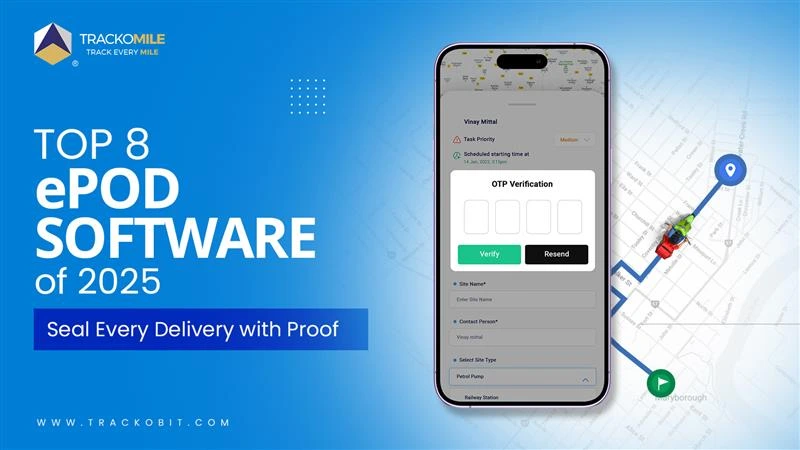-
TrackoBit
Manage commercial vehicles with the new-age Fleet Management Software
TrackoBit -
TrackoField
Streamline your scattered workforce with Field Force Management Software
TrackoField -
Features Resources
-
Blog
Carefully curated articles to update you on industrial trends. -
White Paper
Insightful papers and analysis on essential subject matters. -
Glossary
Explore an alphabetical list of relevant industry terms. -
What’s New
Get TrackoBit & TrackoField monthly updates here. -
Case Study
Explore the cases we solved with our diverse solutions. -
Comparisons
Compare platforms, features, and pricing to find your best fit.
-
About Us
Get to know TrackoBit: our team, ethos, values, and vision. -
Careers
Join the most dynamic cult of coders, creatives and changemakers. -
Tech Support
Learn about our technical support team and services in detail. -
Events
Check out the exhibitions where we left our marks and conquered. -
Contact Us
Connect with us and let us know how we can be of service.
The Ins and Outs of Split Shipments
- Author:Tithi Agarwal
- Read Time:10 min
- Published:
- Last Update: December 17, 2025
Table of Contents
Toggle
When the products are too big or heavy to be boxed in a single delivery package, or there is an inventory shortage, split shipment occurs. Here is a guide to tell you all about it.
Table of Contents
Toggle
Your order will be delivered in two parts: Shipment 1 on Tuesday and Shipment 2 on Thursday!
Split shipment has become an integral part of supply chain management ever since we businesses decided to deliver almost everything to customers’ doorsteps. What if the order is for a chair and a sofa set from two different sellers? Both of these items cannot fit in a single box, and even the location of pickup is different.
This is where split shipment comes into place. Though this form of shipping is undoubtedly helping delivery companies deliver shipments with proper packaging, this also hurts the business and the customer. To learn more about the intricacies of split shipment, read this blog in one go! (no splits).
What is Split Shipping?
A split shipment refers to the practice of dividing a larger shipment into multiple smaller shipments that are dispatched separately. Each shipment will contain some portion of the ordered items, and these orders are sent at different times or via different routes. Split shipments are essentially a strategic maneuver to ensure timely delivery and optimise logistical processes.
The primary purpose of utilizing this practice is to enhance the efficiency of order fulfillment and meet customer expectations for prompt deliveries. Companies can capitalize on available inventory, distribution centers, and transportation resources by breaking down a single order into smaller segments. This allows them to expedite the delivery process, especially when certain items are available in one warehouse and not in another.

Why Does a Split Shipment Occur?
Delivery companies continuously seek ways to maximise efficiency and save costs, and they never want to purposefully separate shipments—at least not without a valid reason. For instance, companies that ship and sell enormous furniture will be forced to ship several items in several boxes.
Here are some reasons why split shipments occur:
1. The products ordered are being stored in different locations
Many companies choose multi-warehouse shipping techniques to ship products. They store, pack, and ship products in the warehouse closest to the customers’ destination, saving money on transportation.
Usually, when using a multi-warehouse strategy, you will stock an item at each of your fulfillment centers, but inventory may differ from place to place. In this instance, one fulfillment centre may fulfill the demand for one item, and another may fulfill the demand for the second item.
The concept of split shipping guarantees that consumers receive their things on schedule. There are fewer chances of consumers knowing that their orders are being fulfilled from different warehouses.
2. Part of the order is on backorder
One of your products might be listed for sale on your website but might be out of stock or placed ( often called backorder). In this scenario, a customer may buy a number of items, including both in-stock and backordered goods. It makes sense to split the shipment so the customer receives their things quickly. Pro tip: Items in stock should be sent first, and the backordered items should be sent when they become available.
3. The customer needs to send part of an order to a different location
Customers may wish to divide various items from a single large order into several shipments to be shipped to different addresses. However, this isn’t very usual in e-commerce. Although most customers will make separate orders incase of gifting, but they tend to club orders during the festival or holiday season.
4. Items won’t fit safely in a single package
Typically, things that are extremely heavy or have odd shapes must be packaged separately in a box for safe shipping. For instance, receiving both a lamp and a carpet in a single box is impossible, even if you order them from the same online furniture retailer.
Fragility is another factor that could lead to products being transported separately. It’s important to box fragile things carefully, making space for packing materials that won’t shatter them. Take candles, for example: if you ship a bunch of them in a single package, not only will they become tough to protect, but the package will become very heavy very quickly.
5. When items are customized versus purchased as is
Split shipments occasionally occur when products are ordered with customisations rather than off-the-shelf or shipped straight from the manufacturer. Custom embroidery is one instance. Let’s assume the consumer has ordered a pair of pants and a flannel on which they want their initials. These shipments will likely arrive in different cycles, allowing customers to get their jeans as soon as feasible.
Why Split Shipments Are Costly for Businesses
In logistics, split shipments have become somewhat of a double-edged sword: they can increase expenses for companies while also providing efficiency gains. Even though dividing orders into many shipments may appear like a smart way to speed up delivery, it’s important to look into the underlying causes of the costs involved in this technique.
Fragmented Shipping Costs
One of the main causes of increased shipping expenses is the dispersion of expenses. Each shipment has separate shipping costs when several goods are shipped out individually. These costs cover the cost of handling, packing, shipping, and frequently the final mile delivery.
These separate expenses add up when an order is divided into multiple shipments, increasing the total delivery cost. For organisations handling large volumes of orders, the cumulative effect of dispersed transportation costs can negatively impact operational budgets and profit margins.
Operational Overhead
They create complexity that requires more resources to manage properly. Each split shipment must be packaged, labeled, and documented separately. This increases labour expenses and multiplies the administrative effort, taking up valuable employee time that could be used for other important activities.
More monitoring is also required to track and oversee several shipments, which requires a stronger logistical infrastructure. Due to their operational overhead, they can unintentionally increase operating costs and decrease operational efficiency.
Transportation Inefficiencies
They may cause the usage of transportation resources to be less than ideal. Orders that are broken up into smaller shipments may only take up a small portion of the delivery trucks’ available space. This causes the capacity to be underutilised, which raises the cost of transported products per unit.
Furthermore, they frequently require several carriers or routes, which prevents transportation from being consolidated. Transportation expenses are aggravated by inefficiencies resulting from underutilised capacity and the difficulties of coordinating different routes.
Inventory Management Challenges
Their effect on inventory management is another important issue that drives up expenses. Companies must keep greater volumes of safety stock on hand to cover the unpredictable nature of split shipments. If an order needs to be divided, this preventive procedure guarantees that the products are available for fulfillment.
Higher safety stock levels, however, tie up funds that may be used for more profitable endeavors. In addition, the requirement to oversee inventory across several shipments and locations raises the possibility of overstock or stockout scenarios, exacerbating inventory management and carrying costs.
Although their purpose is to fulfil customer demands for on-time delivery, it’s important to understand their complex financial effects on companies. Resolving these issues is essential for companies navigating today’s logistics environment to preserve a balance between cost-effectiveness and operational efficiency.
How do Split Shipments Negatively Impact Business?
Split shipments have their benefits. They can ensure products get to customers on time and undamaged. They can also offer convenience, like when buying items in stock and on backorder. But all good things come at a cost.

1. How split shipments can damage the customer experience
It is rarely a pleasant client experience to receive a split package, particularly if the customer truly needs every item to come at once. There are few things worse than an unhappy customer, even though sending divided shipments appears preferable to delaying fulfilment until every item is ready to be shipped together.
Note: You can avoid many difficulties later on by informing the consumer upfront that split shipments may or may not occur.
2. How split shipments increase shipping costs
The biggest effect of split shipments is increased shipping expenses. It should go without saying that your shipping costs will increase as you ship more goods. In general, your cost per shipment will increase with the number of shipping labels you print for each order.
But it’s not just determined by volume. The final cost to the same destination may vary depending on the divided shipment’s origin and the US shipping zones.
Individual shipping carriers determine shipping zones. Carriers use shipping zones to calculate shipping costs based on zip code-based distance travelled. A package’s shipping zone increases with distance from the shipment’s origin, increasing the package’s cost.
However, if you wait for inventory to be available in the warehouse closest to the final destination, your customer may not be happy with the delivery delay.
Read Blog – What is Logistics Management?
3. Split shipments can lead to more returns
Customers are more likely to return items when they receive them in multiple shipments over several days. Suppose your customer ordered decorations, tablecloths, paper plates, and other supplies for a Fourth of July or Diwali celebration, but only half of the products show up on time. These items will likely be sent back.
4. Split shipments can lead to more customer support inquiries
You’re probably in the clear if the buyer knows, at the time of purchase, that their things will arrive in many shipments. You will, however, be informed if a customer receives a box that appears to be missing some items.
It’s never a good thing to have more customer support queries. Your bottom line will suffer whether the increased volume overwhelms your current team or necessitates hiring more.
5. Split shipments cause a larger carbon footprint
It takes more packaging supplies and fuel to ship several parcels for a single order. Some people might not notice this, but others might not be happy with the environmentally unfriendly shipping technique.

How to Avoid Split Shipments
It takes more packaging supplies and fuel to ship several parcels for a single order. Some people might not notice this, but others might not be happy with the environmentally unfriendly shipping technique.
Centralized Inventory Management: The Backbone of Efficiency
- Real-Time Visibility: Install centralised inventory management solutions that give you real-time information about stock levels at any site. This ensures that customers and fulfilment teams may easily access accurate information.
- Dynamic Replenishment: Use automatic replenishment techniques, which set predetermined inventory thresholds to initiate refilling orders. This proactive strategy eliminates the necessity for partial shipments and prevents shortages.
Effective Communication and Customer Interaction: Setting Expectations
- Clear Delivery Windows: When a customer makes a purchase, make sure they are informed about the delivery windows. This controls their expectations and facilitates improved collaboration.
- Customer Preferences: Give clients the choice to wait for all things to be available before delivering them, or to combine items into a single shipment. Customers are now empowered to select the delivery method of their choice.
Read Blog – ETA vs ETD: Key Differences Explained
How Optimised Routing Increases the Efficiency of Split Shipments
Optimised routing greatly increases the efficiency of split shipments in logistics by
- Efficiently allocating resources
- Minimising transportation costs
- Cutting down on transit times
- Improving customer experience
- Dynamically adapting to changing conditions
- Guaranteeing load balancing
- Minimising environmental impact
It happens by optimizing routes to cut costs and time, using algorithms to find the best distribution of trucks, drivers, and fuel, and constantly modifying plans in response to real-time data. Route optimization software like TrackoMile, which utilises algorithms to suggest the shortest and best-suited routes, makes all this possible.
Among the few advantages are simplified communication, route optimization for several parameters, and favorable effects on operational effectiveness and environmental sustainability.
Partner with 3PL Service Providers to Enhance Split Shipping Management
While split shipments aren’t always avoidable, you must do all you can to prevent them so your bottom line isn’t harmed. Reducing split shipments will make your retail supply chain more efficient, save you money on shipping costs, and reduce waste. By partnering with a 3PL you can optimize your shipments, prevent split orders, and improve your profit margin.
It manages multiple warehouses, enabling closer proximity to end customers, which reduces shipping time and costs. 3PLs use advanced inventory management systems to optimize stock levels and route shipments efficiently.
Conclusion
After considering all of the aforementioned points, split shipments are a useful tactic for increasing customer happiness and delivery efficiency. By dividing orders into discrete packages and shipments from various locations, firms can enhance inventory management, accelerate delivery times, and provide customers flexibility.
However, businesses must implement it cautiously, considering customer preferences, packaging waste, communication transparency, and cost considerations. Finding the ideal balance is essential to using split shipments as a potent tool in the dynamic world of logistics and supply chains.
Tithi Agarwal is an established content marketing specialist with years of experience in Telematics and the SaaS domain. With a strong background in literature and industrial expertise in technical wr... Read More
Related Blogs
-

How Rider Tracking Software Improves Delivery Accuracy and Reduces Fraud
Tithi Agarwal December 8, 2025Rider tracking software improves delivery accuracy with real-time GPS visibility and automated ePOD. It also enables route optimisation and fraud…
-

Top Electronic Proof of Delivery (ePOD) Software in 2026
Tithi Agarwal September 25, 2025Electronic proof of delivery has become the backbone of modern logistics. Explore the top 8 ePOD software in 2025 and…
-

3PL vs. 4PL: Which is Best for Your Business?
Tithi Agarwal September 25, 2024Confused about choosing between 3PL and 4PL for your retail supply chain? Read this blog to find out which is…
-

What is Payload Capacity? Payload Capacity Vs. Towing Capacity
Tithi Agarwal September 10, 2024Payload capacity is the total weight a vehicle can safely carry, and it is crucial for safety and compliance. Exceeding…

Subscribe for weekly tips to supercharge your last-mile delivery.
Your inbox awaits a welcome email. Stay tuned for the latest blog updates & expert insights.
"While you're here, dive into some more reads or grab quick bites from our social platforms!"Stay Updated on tech, telematics and mobility. Don't miss out on the latest in the industry.
We use cookies to enhance and personalize your browsing experience. By continuing to use our website, you agree to our Privacy Policy.




































